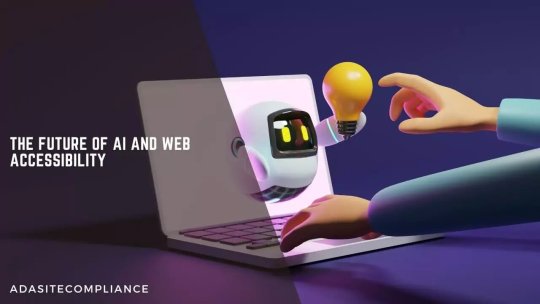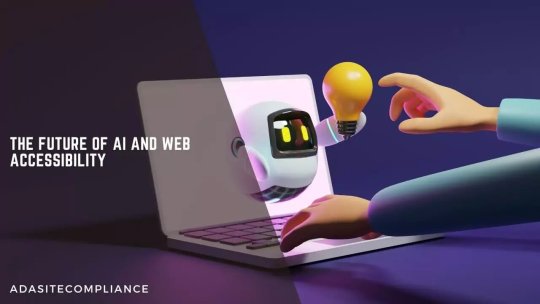#image recognition technology
Explore tagged Tumblr posts
Text
Harness the Value of Visual Data With Image Annotation for Machine Learning
Image annotation is important to help computers see and understand the data. Thus, it becomes an important process for businesses looking to implement Computer Vision and NLP models.
At the same time, it is important for you to know the image annotation prerequisites and how outsourcing visual data labeling tasks can be beneficial for you.
#Image Annotation for Machine Learning#image recognition technology#outsource image editing#image recognition
0 notes
Text
घिबली स्टाइल तस्वीरों का क्रेज: मस्ती के साथ छिपा है बड़ा खतरा! #News #HindiNews #IndiaNews #RightNewsIndia
#AI generated images#AI tools safety#cyber fraud#data leak#deepfake dangers#facial recognition technology#Ghibli style photos#personal data protection#privacy risks#Social Media Trend
0 notes
Text
Use Cases of OCR Translation. Which is the best Image to Text Converter Online?

Learn How Optical Character Recognition Can Make a Difference Discover how OCR with enhanced efficiency, accuracy, and automation is transforming finance, healthcare, logistics, and much more.
OCR Translation helps to read and transform the printed, written, or scribbled characters. The computer alters the image content into machine-encoded texts. This is a subcategory of image recognition. The character recognition application converts a digitized or scanned material into a written document.
In this in-depth write-up, we explore OCR use cases and the uses of OCR Translation technology and common and industry-specific applications that highlight the importance of text extraction. OCR APIs were developed to transcribe text coming from handwritten documents for better interpretation by machines. There are now increasing applications being used across industries.
There are common applications of OCR Translation such as:
Extracting text from scanned documents for digital archiving
Text recognition for images to automate data entry.
Convert readable PDFs into writable formats.
Increase accessibility by converting printed text into digital text for screen readers.
OCR technology improves data accuracy, manages workflows, and increases industry productivity.
Common Optical Character Recognition (OCR) applications and use cases
1. Invoice processing
Data extraction: Retrieves invoice numbers, vendor information, amounts, and dates to ensure precise and error-free data capture.
Efficiency boost: It enhances overall efficiency in managing documents through ease of handling and organizing large volumes of documents.
Knowledge management: It assists the organization in better management and exploiting its knowledge assets.
2. Document digitization
Physical to digital conversion: Image to Text Converter Online is used to convert paper-based documents to digital, thus making their handling and storage easier.
Easy access: Makes historic records, contracts, and legal papers easily traceable; hence, access to information will be faster.
Storage needs: It reduces the use of physical storage space contributes to less clutter and saves on the cost of storage.
3. Recover information from forms
Automatic processing of forms: Assists in gathering information fast and accurately through form processing using registration documents, application forms, and survey forms.
Environmental impact: It applies in reducing paper usage toward achieving sustainability since it reduces the carbon footprint of any organization.
Saving time: This accelerates the data entry processes that enable the applications and forms to be processed fast.
Applications in industry: It is useful for the intake forms of patients in hospitals, loan applications in banks, and all application procedures in government offices.
Error Reduction: It greatly diminishes the likelihood of data entry errors. More accurate records are ensured.
4. Making documents searchable
Text scanning: Scanned images and documents are made into searchable text for ease of retrieval.
Improved retrieval: The process improves the location of specific information in big text repositories, saving time and effort.
Documentation management: Organizing files and retrieval in virtual archives enhances efficiency in a firm's operational activities.
OCR Translation technology has enormous potential in all industries. We discussed how OCR enhances data management. Automated digitized documents and invoice processing extract data to enhance document searchability and different forms of image content.
Organizations can perform data entry from printed papers or data records using OCR as input, including passports, portfolios, financial records, sales receipts, and business cards.
#Online OCR Tools#Image To Text Converters#Free OCR Software#Best OCR Technology#Accurate Text Recognition
0 notes
Text

Digital Content Accessibility
Discover ADA Site Compliance's solutions for digital content accessibility, ensuring inclusivity online!
#AI and web accessibility#ChatGPT-3#GPT-4#GPT-5#artificial intelligence#AI influences web accessibility#AI-powered tools#accessible technology#tools and solutions#machine learning#natural language processing#screen readers accessibility#voice recognition#speech recognition#image recognition#digital accessibility#alt text#advanced web accessibility#accessibility compliance#accessible websites#accessibility standards#website and digital content accessibility#digital content accessibility#free accessibility scan#ada compliance tools#ada compliance analysis#website accessibility solutions#ADA site compliance#ADASiteCompliance#adasitecompliance.com
0 notes
Text

#perception#artificial intelligence#technology#image recognition#ai world#digitalart#art#ai#digital world#aiart
1 note
·
View note
Text
Decoding the True Potential of Visual Data with Image Recognition Services
Combining image recognition with Machine Learning has the capacity to revolutionize businesses. Its usage spans across a gamut of industries and segments as listed here in the blog.
Read on to know more:
#image recognition#image recognition technology#image recognition services#outsource image annotation services
0 notes
Text
#emotion ai#emotion recognition#job interview#interview tips#artificial intelligence#ai#ai image#technology#emotion ai software
0 notes
Text
Simplifying OCR Data Collection: A Comprehensive Guide -
Globose Technology Solutions, we are committed to providing state-of-the-art OCR solutions to meet the specific needs of our customers. Contact us today to learn more about how OCR can transform your data collection workflow.
#OCR data collection#Optical Character Recognition (OCR)#Data Extraction#Document Digitization#Text Recognition#Automated Data Entry#Data Capture#OCR Technology#Document Processing#Image to Text Conversion#Data Accuracy#Text Analytics#Invoice Processing#Form Recognition#Natural Language Processing (NLP)#Data Management#Document Scanning#Data Automation#Data Quality#Compliance Reporting#Business Efficiency#data collection#data collection company
0 notes
Text
A Comprehensive Guide To Optical Character Recognition (OCR)
Optical character recognition (OCR) is sometimes referred to as text recognition. OCR systems use a combination of hardware and software to convert scanned images, PDFs, and other documents into editable and searchable text. Hardware such as scanners and software typically handles the advanced processing for OCR.
OCR technology is commonly used to digitize historical documents, books, newspaper archives, and other printed materials. It is also used to automate tasks such as data entry and document search.
In today’s blog, we will dive into the history of OCR and also understand how OCR works!
#nitorinfotech#blog#nitor#software engineering#software services#software development#software#softwarecompany#itservice#it services#itcompany#itconsultancycompany#generative ai#aiml#ai generated#ai image#artificial intelligence#technology#optical character recognition#ocr#ocr technology#engineering companies#engineering#optical recognition
0 notes
Text
Challenge: NSIN and xTech Present: Good Vibrations - Technology Org
New Post has been published on https://thedigitalinsider.com/challenge-nsin-and-xtech-present-good-vibrations-technology-org/
Challenge: NSIN and xTech Present: Good Vibrations - Technology Org
The U.S. Army seeks novel, robust algorithms to determine whether vehicles pose a threat using inexpensive terrestrial ground sensors for surveillance and reconnaissance of the battlefield.
With advancements in signal processing and autonomy, Army modernization efforts need to advance the terrestrial sensing layer to serve as a complementary, persistent observation channel to the aerial and space layers.
This challenge focuses on developing the core capabilities of acoustic and seismic sensing for target discrimination techniques.
“Develop core (acoustic and seismic) multi-modal sensing algorithms and sensor fusion that reveal common and unique attributes for target classification of ground vehicles.”
The Good Vibrations challenge is seeking novel techniques to extract acoustic and seismic features that are unique to various categories and classes of ground vehicles using real-time, power-efficient algorithms.
The goal is to extract features technically relevant to target classification. Data signatures from resource-constrained acoustic and seismic sensing modalities will be provided as Government Furnished Information (GFI) to the semi-finalist applicants to extract target features and determine target geometry, kinematics, and category / class.
A scoring mechanism will be used to assess the viability and performance of the proposed and delivered algorithms based on criteria defined herein.
Submissions to this Challenge must be received by 06:59 am EET Jan 4, 2024,
Source: Challenge.gov
You can offer your link to a page which is relevant to the topic of this post.
#2024#A.I. & Neural Networks news#Algorithms#challenge#channel#classes#Competitions#data#Features#Fusion#geometry#Government#Image recognition#Link#Military technology#object recognition#performance#power#reconnaissance#semi#sensing#sensor#sensors#signal#signal processing#Software news#Space#surveillance#technology#time
0 notes
Text
Image recognition, often called computer vision, constitutes a domain within artificial intelligence dedicated to crafting systems that comprehend and interpret visual information from the real world. Its intricate process involves training computer systems to emulate the human visual system by recognizing and categorizing objects, patterns, and features within images.
#image recognition#ai image#custom software development#software development firm#web application design#technology
0 notes
Text
Neurons and NPCs: Wiring the Future of Gaming AI
The Dawn of Dynamic Realms | AI-Driven NPCs Reshaping Video Gaming Introduction:A revolution is unfolding in the world of video gaming. Artificial Intelligence (AI) is transforming Non-Player Characters (NPCs) from scripted entities into dynamic, lifelike figures. This evolution is not just technological; it’s a redefinition of interaction and narrative immersion, offering new dimensions to…

View On WordPress
#AI#AI Development#AI Experts#AI Integration#Artificial Intelligence#Digital Transformation#Future of Work#Image Recognition#Innovation#Machine Learning#Multimodal AI#Skills Adaptation#technology#Unreal Engine#Voice Recognition
0 notes
Text
Need me an anti-facial-recognition, Italian-knit, crop-top




x
#technology#ai#image detection#privacy#artificial intelligence#computer science#machine learning#196#fashion#facial recognition#cyberpunk#cyberpunk bingo
0 notes
Video
tumblr
🌟 Brace yourself for the mind-blowing advancements of Artificial Intelligence that are transforming various industries across the globe! 🤖💥 From speech recognition to robotics, AI has taken massive leaps in technological innovation. 💡🚀 Discover how it is revolutionizing industries with astonishing breakthroughs in autonomous vehicles, fraud detection, virtual assistants, medical diagnosis, image recognition, language translation, and so much more. 🌐🔍 Prepare to be amazed by the power of AI as it reshapes our world. Stay tuned for an eye-opening journey into the realm of AI! 🌈📚 #ArtificialIntelligence #TechnologicalAdvancements #AIRevolution
#🌟 Brace yourself for the mind-blowing advancements of Artificial Intelligence that are transforming various industries across the globe! 🤖💥#AI has taken massive leaps in technological innovation. 💡🚀 Discover how it is revolutionizing industries with astonishing breakthroughs in#fraud detection#virtual assistants#medical diagnosis#image recognition#language translation#and so much more. 🌐🔍 Prepare to be amazed by the power of AI as it reshapes our world. Stay tuned for an eye-opening journey into the realm
0 notes
Text
AI Influences Web Accessibility

The Future Of AI And Web Accessibility
In our increasingly digital world, equal access to information is crucial. However, many individuals with disabilities face challenges in accessing online content, such as websites, articles, and videos, due to various barriers.
Imagine a world where technology empowers everyone to access information effortlessly, regardless of their abilities. Thanks to artificial intelligence (AI), this vision is becoming a reality. AI is breaking down barriers and making technology more accessible.
By improving information accessibility, AI not only aids individuals with disabilities but also enhances the overall user experience for everyone. ChatGPT-3 has accelerated AI-driven innovation, and while the future of AI and website accessibility is unknown, innovative technologies like GPT-5 have immense potential to enhance accessibility.
We at ADA Site Compliance have a team of accessibility experts who stay updated with the latest regulatory trends and emerging technology. They help organizations like yours ensure that all digital content meets accessibility standards.
Exploring the Future Potential of Artificial Intelligence
Artificial Intelligence (AI) involves creating computer systems designed to mimic human intelligence. A fundamental aspect of AI is machine learning algorithms, a subset that allows computers to learn and evolve based on experience without explicit programming.
Technological advancements have unlocked AI’s vast potential, enabling intelligent devices to perform tasks that once were solely within the realm of human cognition.
What is AI?
To grasp how AI influences web accessibility, we first need to define it.
Artificial Intelligence involves developing software and systems that perform tasks requiring human intelligence. AI achieves this through various technologies, including natural language processing and computer vision. As these functions become more accessible, they benefit society even more
What Are Accessibility Technologies?
Accessibility technologies provide tools and solutions to ensure that people with disabilities can access and use web content effectively. These technologies, including AI-powered tools like chatbots, digital platforms like GPT, screen readers, and alternative input devices, are designed to enhance digital accessibility and foster inclusivity.
Current AI Technologies
AI is rapidly enhancing web accessibility. Improved computer vision algorithms are making it easier for visually impaired users and seniors to understand web content through better descriptions of visual content.
Here are a few examples of current AI technologies:
1. GPT-4:
OpenAI’s newest chatbot, GPT-4, enhances accessibility for third-party companies. In partnership with Be My Eyes, GPT-4 introduces an AI-powered Virtual Volunteer to assist visually impaired individuals.
2. Apple’s Accessibility Features:
Apple continues to set the standard in accessibility with a suite of new tools launched on Global Accessibility Awareness Day. These enhancements include improved Voice Control, customizable Siri options, and a unique Assistive Access mode to simplify device usage for people with motor or cognitive disabilities.
3. Google’s Enhanced Navigation Features:
In October, Google upgraded its navigation features for Google Maps and business pages. These enhancements include wheelchair-accessible walking routes, improved Live View for visually impaired users, and a new identity attribute label to help locate disabled-owned businesses.
4. Natural Language Processing (NLP):
NLP enhances text readability, aiding individuals with cognitive disorders, learning disabilities, and age-related cognitive decline.
Despite these advancements, this cutting-edge technology is not yet perfect. Image recognition still struggles with complex scenes and context, and NLP-based text simplification can sometimes lead to a loss of significance. Nevertheless, these developments represent a promising beginning for enhanced digital accessibility.
Examples of How AI Enhances Digital Accessibility
Individuals with visual, auditory, or mobility impairments often face challenges in navigating the digital landscape of the web. Here are some ways AI is making accessibility improvements:
1) Speech Recognition
Speech recognition technology is incredibly beneficial for those with physical limitations, restricted mobility, or typing difficulties. AI-powered speech and voice recognition technologies enable users to control devices and navigate the web using voice commands, significantly enhancing their online accessibility and overall experience.
2) Enhanced Browsing Experience
Did you know that AI-powered virtual assistants and chatbots can significantly enhance online browsing?
These technologies provide personalized support, helping individuals with disabilities access important information and navigate websites more effectively. Accessible websites perform better in search engines but also offer a superior user experience for everyone.
3) AI-Enhanced Visualization for Visually Impaired Users
Imagine a world where images and text describe everything around you. AI-powered screen readers and text-to-speech technologies make written content accessible for visually impaired individuals. Additionally, image recognition systems can describe photos, videos, and live scenes, offering valuable assistance to those with visual impairments.
A crucial accessibility element for visually impaired users is “alt text.” AI can automatically generate alt text for images and videos, ensuring quick and accurate descriptions that describe images. This allows screen readers to interpret and explain on-screen images, making web content more inclusive and accessible.
AI Benefits for Web Accessibility
AI is revolutionizing web accessibility, offering numerous benefits that enhance the online experience for individuals with disabilities. Here are some key advantages AI brings to web accessibility:
a) Enhanced Access
AI has significantly advanced web accessibility for individuals with disabilities. It removes obstacles, enabling users to navigate websites, consume multimedia content more, and engage in online communities more effectively.
b) Boosted Independence and Autonomy
AI empowers individuals with disabilities to use the internet independently. This innovation allows them to manage their online activities without assistance, fostering greater inclusion and promoting autonomy.
Challenges Posed by AI on Web Accessibility
AI enhances online accessibility, but it also introduces several challenges. Here are some key issues AI poses for web accessibility:
i) Accuracy Challenges
Despite advancements, AI often struggles with providing reliable captions, descriptions, translations, and voice recognition. Errors in these areas can make it difficult for users to understand content, thereby limiting the effectiveness of accessibility features.
ii) Over-Reliance
Relying too heavily on AI to improve web accessibility can result in overlooking other essential aspects of accessible design. Use AI alongside comprehensive other accessibility guidelines and principles and not seen as a universal solution.
Future of AI-Driven Web Accessibility
With AI becoming more advanced, it will continue enhancing technology usability and improving web accessibility. Developers will save time and resources when using these tools to discover and fix accessibility issues.
Remember that automated tools cannot guarantee accessibility compliance.
Human knowledge and manual testing by experienced accessibility auditing specialists will still be needed to discover complicated issues and create a fully inclusive user experience for elders and disabled people.
This is where we at ADA Site Compliance can help. We have a team of accessibility experts and web developers who stay updated with the latest regulatory trends to help organizations like yours ensure all web content meets accessibility standards.
For all your website and digital content accessibility needs, contact ADA Site Compliance today!
#AI and web accessibility#ChatGPT-3#GPT-4#GPT-5#artificial intelligence#AI influences web accessibility#AI-powered tools#accessible technology#tools and solutions#machine learning#natural language processing#screen readers accessibility#voice recognition#speech recognition#image recognition#digital accessibility#alt text#advanced web accessibility#accessibility compliance#accessible websites#accessibility standards#website and digital content accessibility#digital content accessibility#free accessibility scan#ada compliance tools#ada compliance analysis#website accessibility solutions#ADA site compliance#ADASiteCompliance#adasitecompliance.com
1 note
·
View note
Text
Automatic Number Plate Recognition System Market To Have Faster Growth in the Software Category
The automatic number plate recognition system market is USD 3,219.9 million in 2023, and will increase to USD 6,010.8 million by 2030, at a rate of 9.5% by the end of this decade. This is because of the increasing use by agencies, such as parking, police force, toll plaza, and traffic management; the growing trend for pay-per-use roads; the evolving automotive industry; the high capital fundings…
View On WordPress
#ANPR Technology#Automatic Number Plate Recognition System#Data analytics#Digital Imaging#Machine learning#market trends#Smart City Initiatives
0 notes